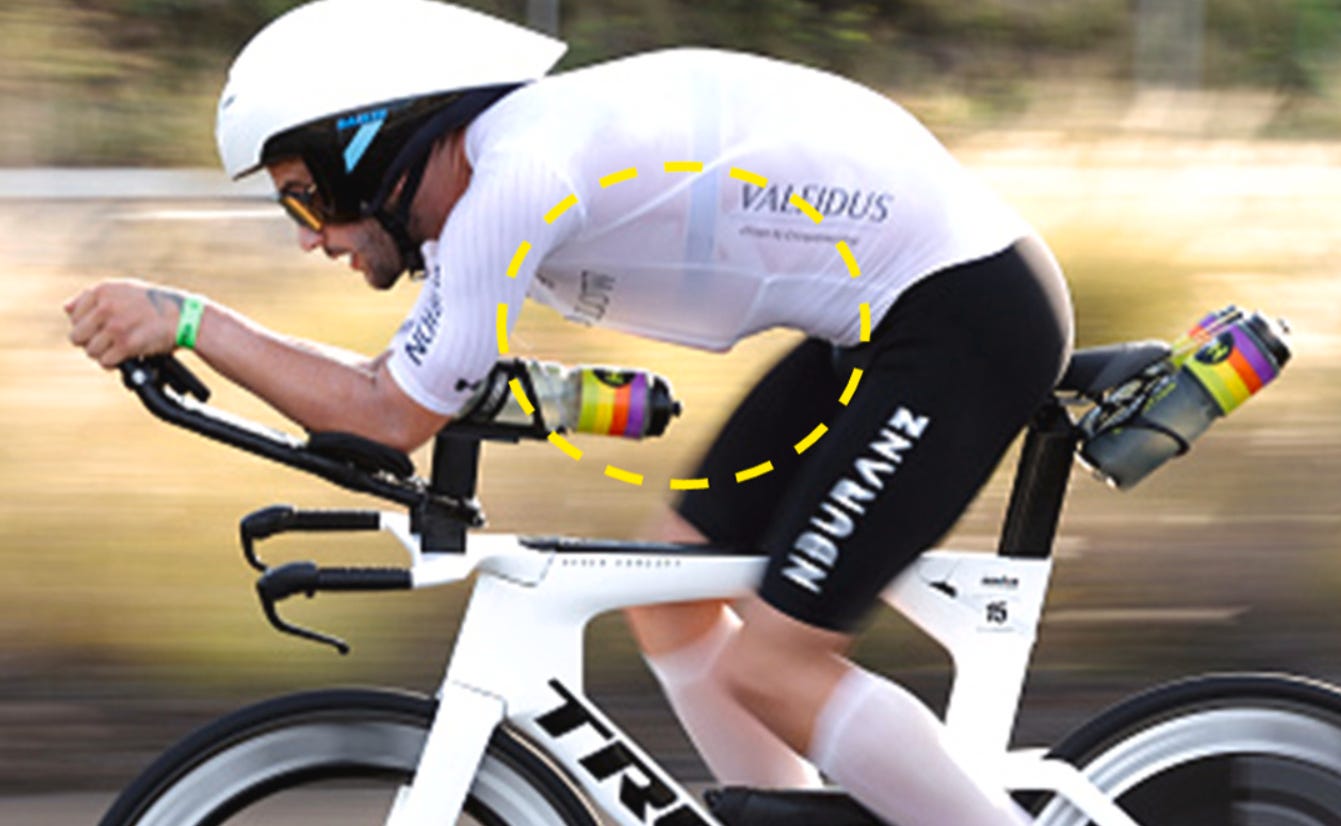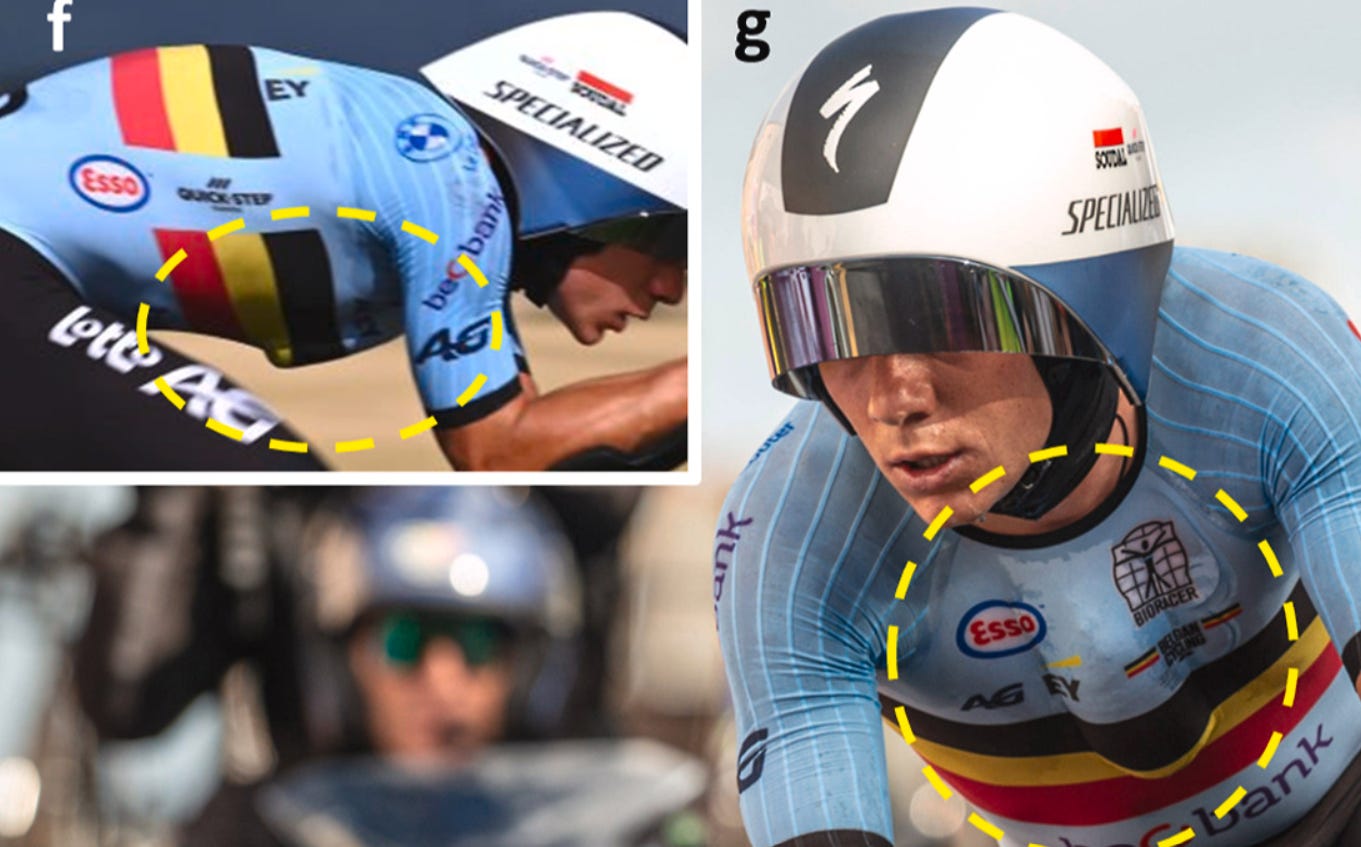6. AERODYNAMIC GAINS: CHEST FAIRING
In time trials, given the high speed and no drafting, every single aerodynamic gain which doesn’t negatively affect power output can make the difference between winning a race or finishing outside the top-10.
One aerodynamic gain recently adopted by some world-class road cyclists is chest fairing.
What is chest fairing?
‘Chest fairing is putting an object between chest and shirt of a cyclist to reduce air resistance’ (1)
Keeping as simple as possible the aerodynamic explanation, chest fairing can help to smooth the passage of air around torso and legs.
Even if chest fairing (using a bottle) has been already previously adopted by some long-distance triathletes, it is only in the last 2-5 years that it spread among road cyclists.
But is it legal according to the Union Cycliste Internationale (UCI) rules? UCI states that:
‘Items of clothing may not modify the morphology of the rider and any non-essential element or device, of which the purpose is not exclusively that of clothing or protection, is forbidden. This shall also apply regarding any material or substance applied onto the skin or clothing and which is not itself an item of clothing. Modifications to the surface roughness of clothing are authorised but may only be the result of threading, weaving or assembling of the fabric. Surface roughness modifications shall be limited to a profile difference of 1mm at most. The measure of surface roughness modification shall be made without pressure or traction on the clothing. All clothing must maintain the original texture of the textile and may not be adapted in a manner to integrate form constraints. Therefore, when not worn, clothing may in no case contain any self-supporting element or rigid parts. (2)
In Italy, there is a common idiom that sounds like: ‘Written the law, find the deception’. So, to decrease as much as possible air resistance, as the radio communication can be considered an ‘essential element or device’, some road cyclists are using the transmitter/receiver as chest fairing, with some cyclists adopting an adapted large wrapping for the transmitter/receiver to use the proper chest fairing shape according to their morphology/time trial position.
Here some examples of recent chest fairing used by world-class athletes:
Does chest fairing really provide an aerodynamic benefit? If yes, to what extent?
A recent study published by world-class aerodynamics expert Professor Bert Blocken (he worked also with Jumbo-Visma) and Colleagues on Journal of Wind Engineering and Industrial Aerodynamics (1) tried to answer these questions.
WHAT DID THEY DO?
Wind tunnel simulations using a full-scale manikin of the average cyclist dimension (177 cm x 65 kg) in a time-trial position without chest fairing vs with seven different chest fairing configurations were performed.
Keep reading with a 7-day free trial
Subscribe to Knowledgeiswatt English to keep reading this post and get 7 days of free access to the full post archives.








